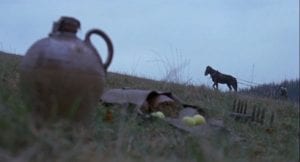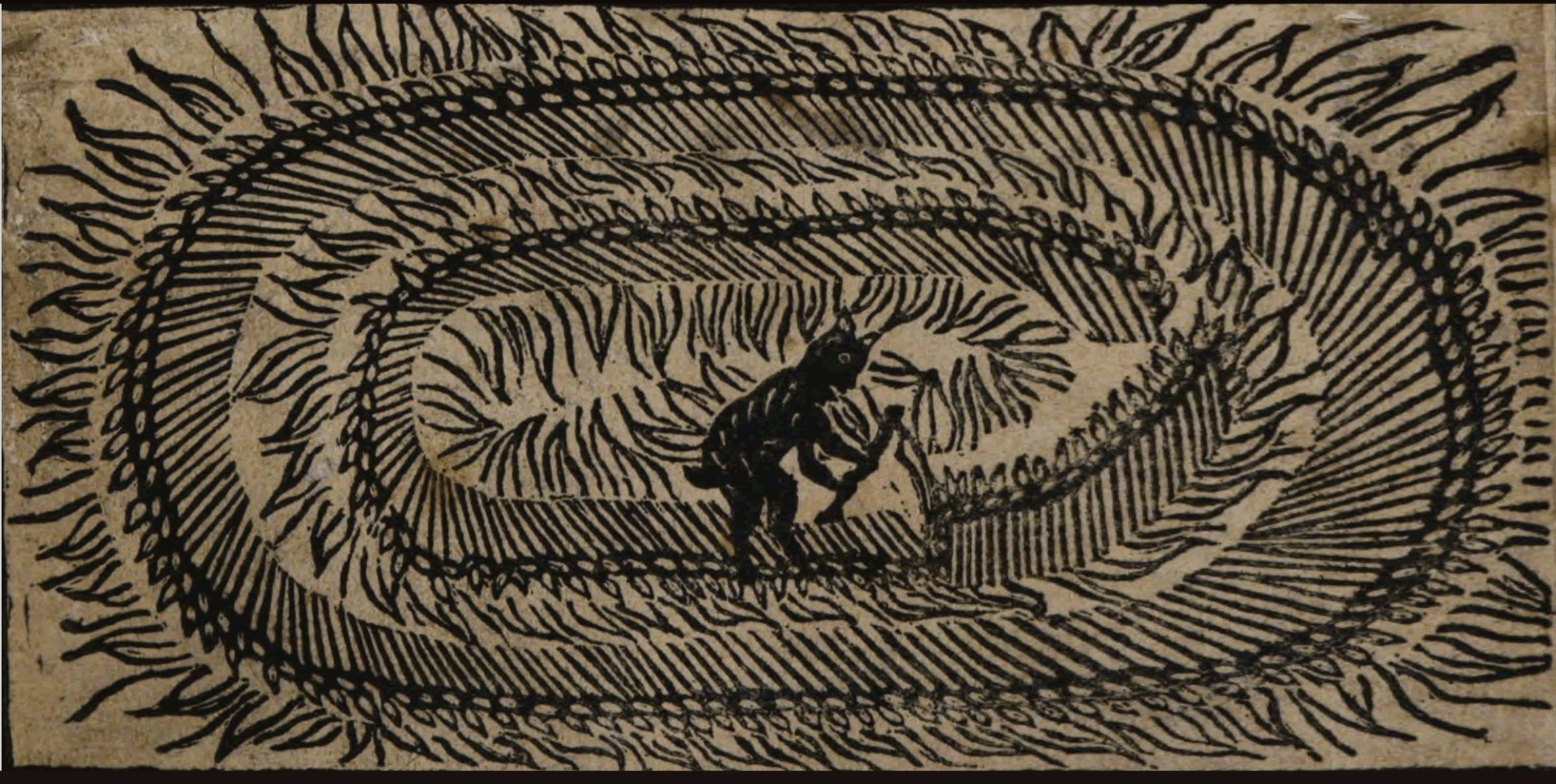We are using as the logo for this conference on folk horror the title illustration from a 1678 pamphlet called “The Mowing-Devil: Or, Strange News out of Hartford-shire.” Perhaps “The Mowing-Devil” might have been a good name for the conference, since so much folk horror links the rural, agriculture, and the demonic. But we wanted to leave room on the conference panels for other incarnations of folk horror from other places (not least, the urban). In any event, we can’t compete with the inspired title of the first conference on folk horror—“A Fiend in the Furrows: Perspective on ‘Folk Horror’ in Literature, Film and Music”—held at Queen’s University Belfast in 2014.
Because it serves as the logo for the conference, I wanted to say something about this pamphlet since it illuminates some recurrent themes of the folk horror tradition.
In the month of August, 1678, a wealthy farmer in Hartfordshire saw that his three-and-a-half acres of oats were ready to be cut down, so he approached a poor neighbor who worked in the summer harvesting others’ crops. The poor neighbor, “as it behoov’d him,” attempted to sell his labor for a good price, and so he asked a bit more than the going rate. This apparently incensed the wealthy farmer who then offered the man “much more under the usual rate than the poor man askt above it.” Angry words ensued, and when the poor man tried to mollify his wealthy neighbor by agreeing to mow his crop at much less than the usual rate, the farmer declared “That the Devil himself should Mow his Oats before he should have any thing to do with him.” And, of course, that’s exactly what the Devil did. In one night, the fields aflame, the Devil cut the farmer’s oats in a perfect circle. The farmer was too terrified to ever touch them after that.
The fact that the Devil lurks in rural areas is, of course, central to folk horror. But, more specifically, the Devil inhabits areas of the natural world that humans have cultivated—farms, fields, furrows, landscapes that mix nature and human activity. It’s no accident that one of the cornerstones of the folk horror filmic canon, The Blood on Satan’s Claw (Piers Haggard, 1971), opens with a boy ploughing a field, just prior to finding a demonic skull buried in the ground, uncovered by the plough.

It’s also telling that a class conflict sets the stage for the entry of the Devil. Folk horror is driven by conflict, often spatially organized (e.g., urban vs. rural) and mobilized by migration. But there’s also conflict around gender, sexuality, ethnicity, and religion—to name only a few sites of contestation. In “The Mowing-Devil,” capitalist logic intrudes into a potentially neighborly relationship as one neighbor is forced to sell his body and labor for as much as he can and the other feels compelled to buy someone else’s labor for as little as possible. In particular, the plight of the poor rural man, who sees the means of employment and income slipping away, will become a staple of folk horror into the twenty-first century.
And lastly, although the pamphlet comes replete with an image of the Devil busily mowing away, He is not actually visible to anyone in the pamphlet. The night of the Devil’s mowing, neighbors see only fields engulfed in flame, and then, the morning after, there are simply neat rows of mowed oats. The Devil, in other words, is an uncanny presence manifest in nature itself—fields, flames, and oats. Indeed, nature often functions in this way in folk horror—as a site of the uncanny demonic or divine. The writer of the pamphlet takes time out from telling the farmer and the laborer’s story to interject that the processes of agriculture inherently demand “hits of Providence,” such as “the aptitude of Soyl, the Seasonableness of Showers, Nourishing Solstices and Salubreous winds, etc.” Just as “Providence” is manifest in agriculture, so too is the demonic manifest as nature in folk horror rather than as an embodied figure in nature.
Anyway, I’m sure there’s much more to be said about this intriguing pamphlet—surely an early folk horror text—so I’m linking to it here.
–Post by Dawn Keetley

